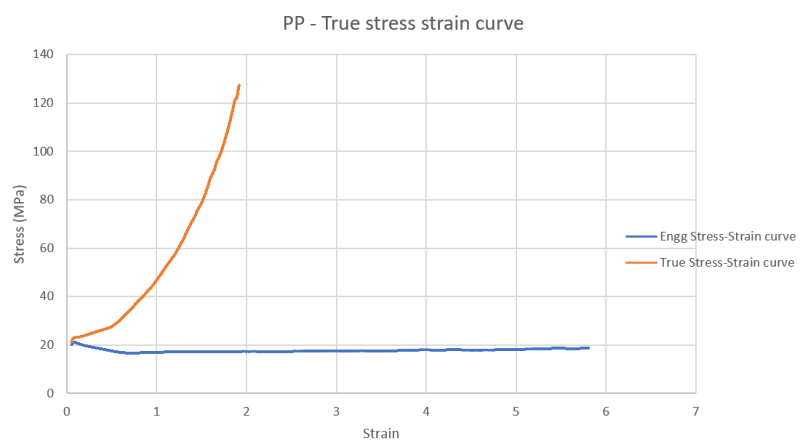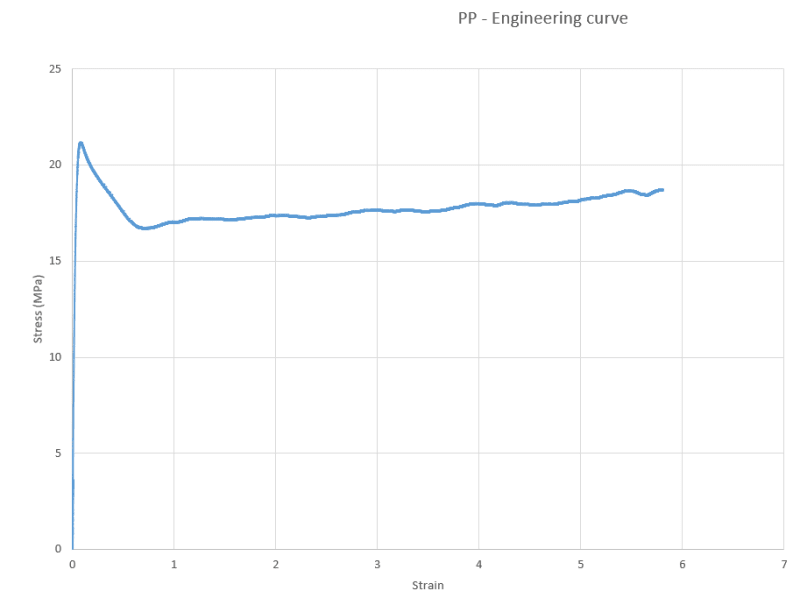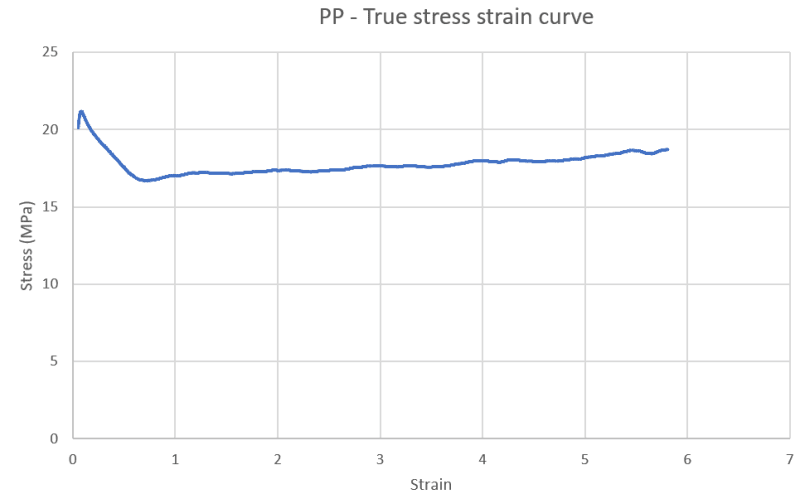InesGomes
Structural
- Jul 31, 2023
- 2
Hello, I need to model the plastic behaviour of a polymer material (polypropylene). I have data from the tensile test, however I'm not sure how can I assess this curve to convert it to true stress-strain curve. Because, I know that I need to delete the data from the elastic behaviour (before the yeld point = 20,09 MPa), however, if we look to the graph, I will have different strain results for the same stress value, and my question is: can abaqus solve this or it wil


 l not converge?
l not converge?




